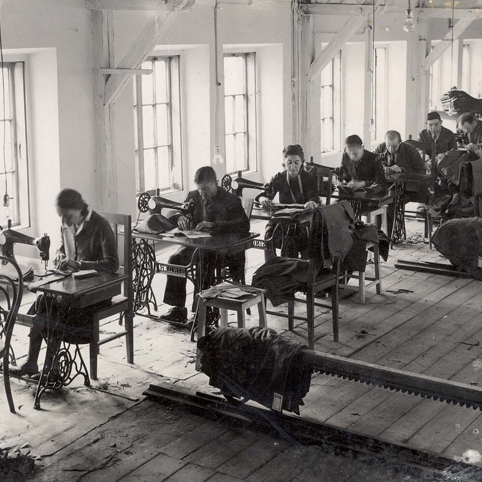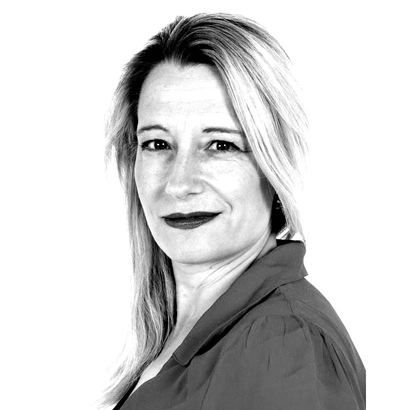They looked so serene, the prisoners of the Auschwitz sewing workshop established by Hedwig Hoess, wife of the camp commandant. But as they stitched glamorous evening gowns for SS women, the seamstresses secretly supported resistance in Auschwitz.
Their leader was Marta Fuchs, a young Jewish dressmaker deported from Slovakia in March 1942. Rudolf and Hedwig Hoess saved Marta from the gas chambers so she could sew, as a slave laborer, for the family. In turn, Marta used her privileged position to save as many other prisoners arriving at the camp as possible. Slowly, the sewing salon became a safe haven.
In a concentration camp, resistance of any kind took courage for inmates who’d been stripped, humiliated, beaten, starved, traumatized, and set against each other in a perpetual fight for survival. Resistance in Auschwitz took many forms, from sharing food and supplying medicine to spreading news of the war’s progress, making escape attempts, and supporting plans for armed revolt.
Marta fought cruelty with kindness—and keen wits. Her forced labor for the Hoess family and other SS women made her a valuable link in the network of the Auschwitz Fighting Group, a resistance group formed in 1943.
As they stitched glamorous evening gowns for SS women, the seamstresses secretly supported resistance in Auschwitz.
Marta had contacts in the vast plunder warehouses of Auschwitz. Here, bribes for guards were sourced, as was civilian clothing for escapees such as Rudolf Vrba, Alfréd Wetzler, and, eventually, Marta herself. (Marta managed to escape from captivity by pretending to be a Polish citizen.)
Marta also became close with a civilian nurse named Maria Stromberger, who, in addition to distributing vital medicines for inmates, smuggled messages and photographs from Auschwitz to the outside world. Through clandestine contacts like Maria, Marta and the other dressmakers sent postcards from the camp to Jews still living openly or in hiding, confirming that the rumors of gas chambers were true, and warning that deportation needed to be avoided at all costs.

Two of the women in Marta’s team of seamstresses had previous experience defying the Nazis. Marilou Colombain, deported from France in January 1943, had been a partisan fighter with the French Resistance. Marilou was arrested with French corsetiere Alida Delasalle, who’d been caught distributing anti-Nazi propaganda within the fabric layers of the corsets she made. Alida later wrote of her resistance work in Auschwitz, “We pilfered everything we could to transmit it to those who needed it most.”
At Auschwitz, the smallest acts of generosity were morale boosters and, sometimes, lifesavers. (There were also minor acts of sabotage, such as blocking SS lavatories with scraps of torn fabric—literal and metaphorical obstructiveness!)
Marta and the dressmakers were forced to bear witness to the executions of prisoners caught resisting or attempting to escape, including the bright young friend of the dressmakers, Mala Zimetbaum, captured with her lover, Edek Galinski, in occupied Poland after a brave escape attempt from the camp.
Auschwitz seamstress Bracha Berkovič heard one of Mala’s last messages before her death: “Run away! You may be luckier than me … ”
Bracha encouraged the other dressmakers to survive at all costs. She knew they would be needed as witnesses after the war—to tell the world what they had endured. Their survival could be credited to their solidarity, and to the spirited resistance work of Marta Fuchs.
Lucy Adlington’s The Dressmakers of Auschwitz: The True Story of the Women Who Sewed to Survive will be published on September 14 by Harper


